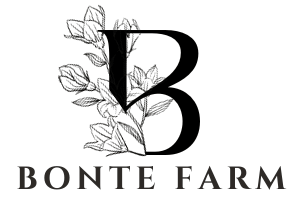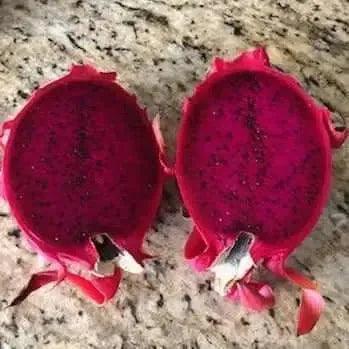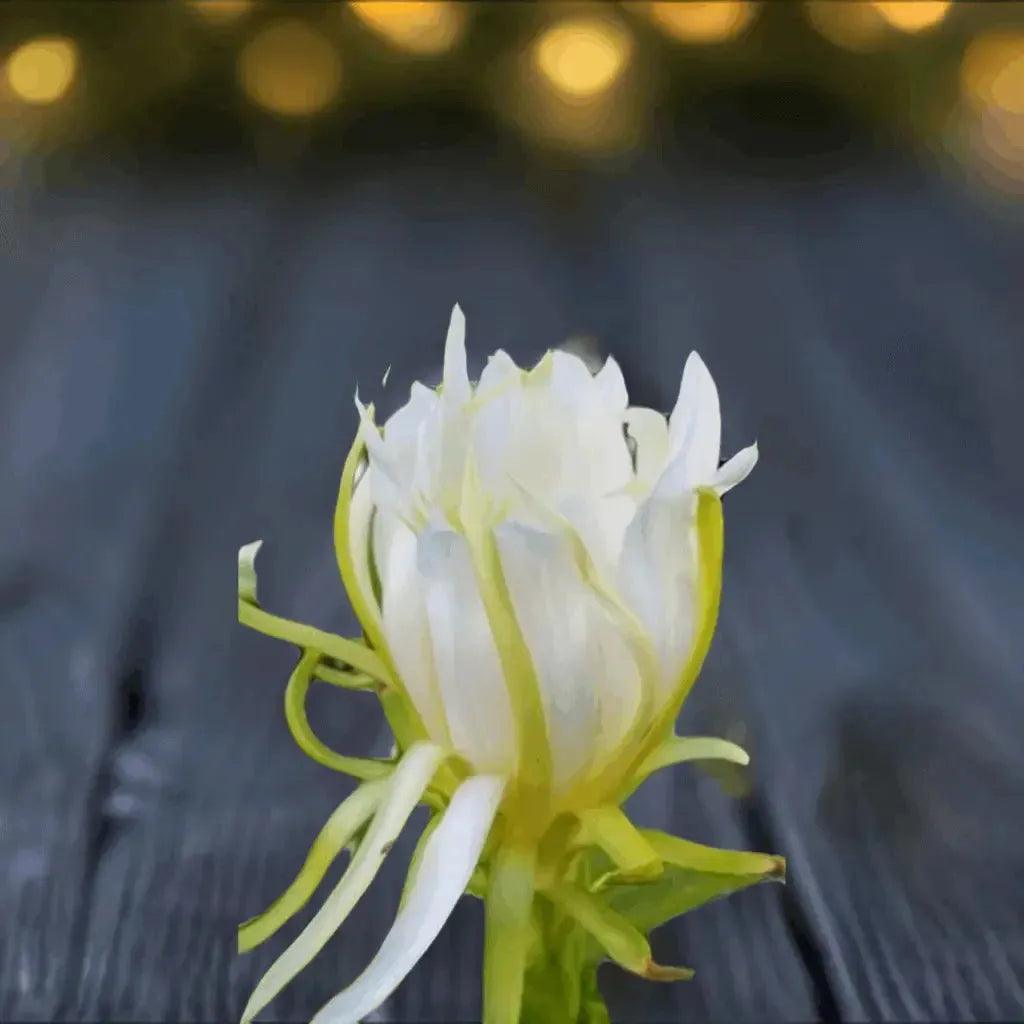Bonte Farm
Dragon Fruit Plant: A Tropical Delicacy, White Flower, Red Fruit
Dragon Fruit Plant: A Tropical Delicacy, White Flower, Red Fruit
Couldn't load pickup availability
Dragon Fruit Plant: A Tropical Delight
The Dragon Fruit Plant (Hylocereus spp.), with its stunning white flowers and vibrant red fresh fruit, is a captivating and productive addition to any garden. This climbing cactus, native to Central and South America, is celebrated not only for its exotic appearance but also for its delicious and nutritious fruit. Known as pitaya, the dragon fruit is a superfruit packed with antioxidants, vitamins, and fiber. This plant offers a unique combination of aesthetic beauty and edible bounty, making it a popular choice for home gardeners, urban farmers, and enthusiasts of tropical flora. Its ability to thrive in warm climates and its relatively low-maintenance nature make it an accessible and rewarding plant to cultivate.
Botanical Characteristics
- Scientific Name: Hylocereus undatus (and other Hylocereus species).
- Common Names: Dragon Fruit, Pitaya, Pitahaya, Strawberry Pear.
- Growth Habit: A fast-growing, terrestrial or epiphytic cactus with long, triangular, fleshy stems that can climb and sprawl. It requires a trellis, wall, or support structure to grow vertically.
- Foliage: The stems are segmented and green, acting as the primary photosynthetic organs. They have a waxy coating and small spines along their edges.
- Flowers: The most striking feature is its large, fragrant, nocturnal white flowers, which can measure up to 14 inches (35 cm) in diameter. These "Queen of the Night" flowers bloom for a single evening, attracting pollinators like moths and bats.
- Flowering Season: Flowering typically occurs from late spring through fall, with multiple flushes of blooms.
Mature Size
A mature Dragon Fruit Plant can reach a height of 10-20 feet (3-6 meters) or more, depending on the support structure. The sprawling stems can create a significant canopy, making it an excellent choice for arbors and large trellises.
USDA Zone
This tropical cactus is best suited for USDA Hardiness Zones 10-11. It thrives in warm, humid to semi-arid climates and is not tolerant of freezing temperatures.
Cultivation and Care
- Sunlight: The Dragon Fruit Plant requires full sun to produce abundant flowers and fruit. It needs at least 6-8 hours of direct sunlight per day.
- Soil: It prefers well-draining soil, specifically a sandy or loamy mix. While it's a cactus, it appreciates more organic matter than most desert cacti. Avoid heavy, clay-based soils that retain too much water.
- Water: Water regularly, allowing the soil to dry out slightly between waterings. While drought-tolerant once established, consistent watering, especially during the flowering and fruiting season, is crucial for optimal fruit production.
- Fertilizer: Fertilize with a balanced, low-nitrogen fertilizer every 2-3 months during the growing season. A fertilizer with a higher phosphorus and potassium content can encourage better flowering and fruiting.
- Pruning: Pruning is essential to manage growth and improve fruit production. Remove old, damaged, or overcrowded stems to allow air circulation and sunlight penetration. Pruning also helps to train the plant to the support structure.
Landscape Use
- Edible Garden: A superb addition to any edible landscape, providing both a visual spectacle and a delicious harvest.
- Specimen Plant: Its unique, climbing form and dramatic flowers make it an excellent focal point or specimen plant on a trellis or pergola.
- Container Gardening: The Dragon Fruit Plant can be grown in large containers, making it suitable for patios, balconies, and indoor spaces in colder climates.
- Trellis or Arbor Plant: Ideal for covering structures, creating shade, and adding a tropical aesthetic to your garden.
Wildlife Attraction
The nocturnal white flowers of the Dragon Fruit Plant are a crucial food source for bats and moths, which are the primary natural pollinators. The vibrant red fresh fruit also attracts birds and other wildlife, though protecting the fruit from hungry critters may be necessary.
Pest and Disease Resistance
The Dragon Fruit Plant is generally resilient. Common issues include fungal rot from overwatering, which can be prevented with proper drainage. Pests such as mealybugs, aphids, and scale can occasionally appear but are manageable with appropriate horticultural practices. Maintaining good air circulation is key to preventing most diseases.
Propagation
Propagation is remarkably easy and reliable, most commonly done by stem cuttings. Simply cut a 1-2 foot section of a healthy stem, allow it to callus for a few days, and then plant it in well-draining soil. Seeds can also be used for propagation, but they take much longer to produce fruit.
Share
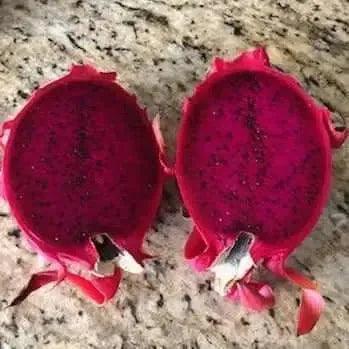
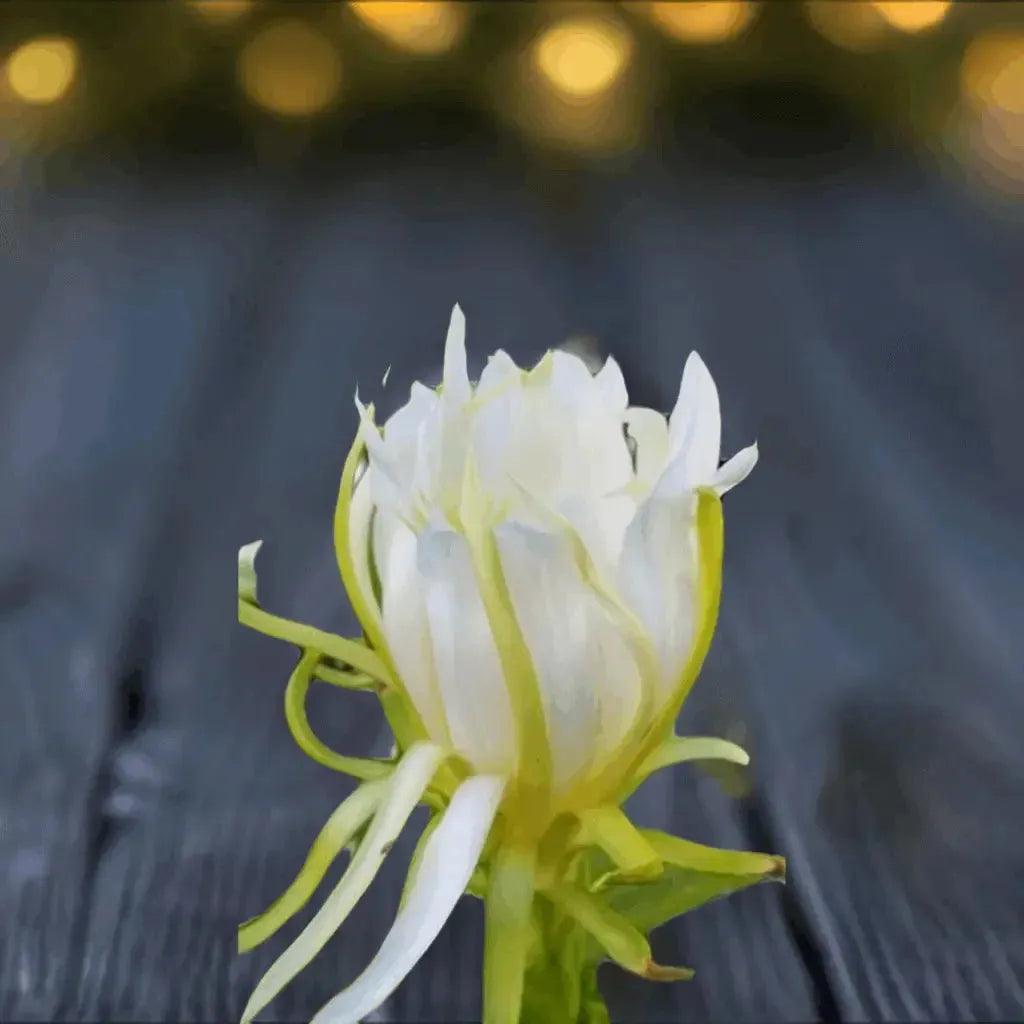
FAQs
Got a question? We are here to answer
